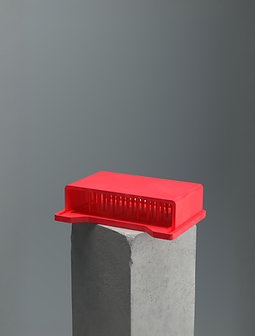Implant Failure Explained: The Critical "Race for The Surface"
- CLYTE research team

- Oct 20
- 3 min read
Medical implants—from surgical mesh and catheters to orthopedic hip replacements—are designed to save and improve lives. Millions are implanted successfully every year. But when they fail, the consequences can be devastating, leading to chronic infection, persistent inflammation, and implant rejection. The reason for this failure often isn't a slow decline; it's a high-stakes sprint that's won or lost in the first few minutes after surgery.
This critical showdown is known as the "race for the surface." When a foreign material is placed in the body, it’s not just an inert device. Its surface becomes prime real estate, a blank slate that two very different contenders rush to claim. The outcome of this race determines whether the implant heals or sabotages the patient.
You might also be interested in learning more about Biofilm! Ask Sophie about implants and biofilms!
The Two Contenders: A "First Settler" Showdown
As soon as an implant enters the body, it's a race to claim the "throne."
Contender 1: Host Cells (The Healing Team) Your body's own cells sprint to the implant surface, trying to cover it completely and integrate the device. They work to build a "biological shield," kickstarting the healing process. If your cells win this race, the implant is successfully integrated, leading to healthy healing and long-term success.
Contender 2: Bacteria (The Saboteurs) At the same time, any bacteria present dash in, aiming to stick to the surface first. If they win, they don't just cause a simple infection. They multiply and begin to build biofilms, which are the root cause of many implant failures.
What is Biofilm? The Fortress That Leads to Implant Failure
A biofilm is not just a collection of bacteria; it's a highly structured "slimy fortress." The bacteria build this protective matrix, which acts as a powerful shield.
This slimy fortress is the central problem because it is:
Highly resistant to antibiotics, which cannot penetrate the matrix to kill the bacteria within.
Resistant to immune attacks from the body's own defense systems.
When a biofilm takes hold, the body is locked in a losing battle. The result is persistent inflammation, failed tissue integration, and chronic infection that can ultimately lead to implant failure & rejection and the need for removal.
Why Are Implants So Vulnerable? The "Stranger" Problem
Why don't our healing cells always win this race? The issue is that the implant is a "stranger." We are asking the body to negotiate with a foreign object.
Natural human tissue has its own "cellular language." It uses specific signals, like the Extracellular Matrix (ECM) and growth factors, to tell cells where to go and how to heal. Most implant materials lack these natural cues. They are biologically silent. This silence creates a crucial hesitation, giving the faster-moving bacteria the head-start they need to stick, settle, and build their fortress.
Tilting the Odds: How to Engineer Implant Success
The solution to implant failure isn't just about stronger antibiotics after the fact; it's about "tilting the racetrack" to ensure our cells get a head start. The future of medical device design focuses on creating "smart" materials that actively support the body.
Key strategies include:
Designing materials with signals that actively and rapidly recruit the body's own healing cells.
Incorporating anti-biofilm strategies directly into the implant surface to make it hostile to bacteria.
Encouraging early vascularization (the growth of new blood vessels) and immune surveillance to help the body protect the implant from day one.
In the end, from a catheter to a joint replacement, winning the surface means winning the recovery.


